Relative pronoun
Relative pronoun


#1 слайд
PRESENTATION
Performed by
Group:
Shymkent 2099 Theme: Relative pronoun
1 слайд
PRESENTATION Performed by Group: Shymkent 2099 Theme: Relative pronoun
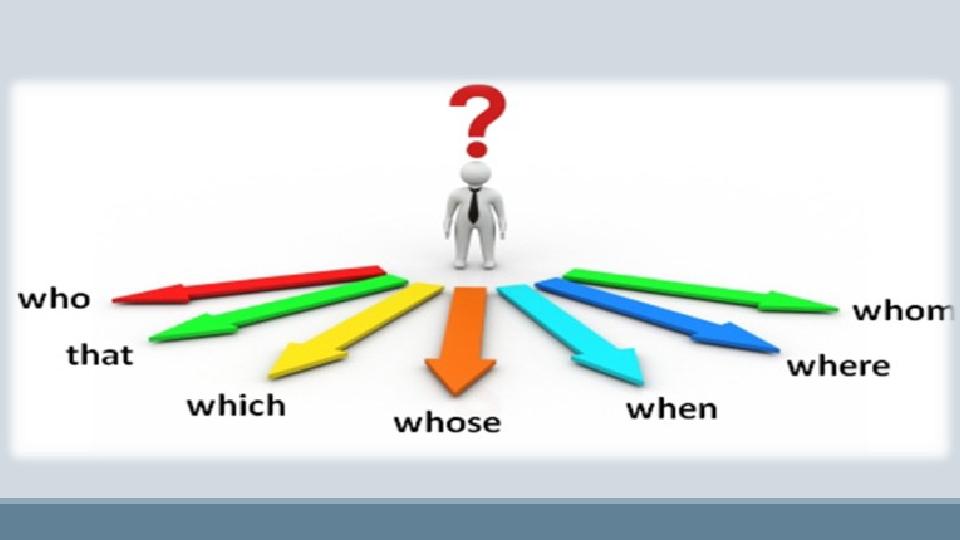
#2 слайд
2 слайд
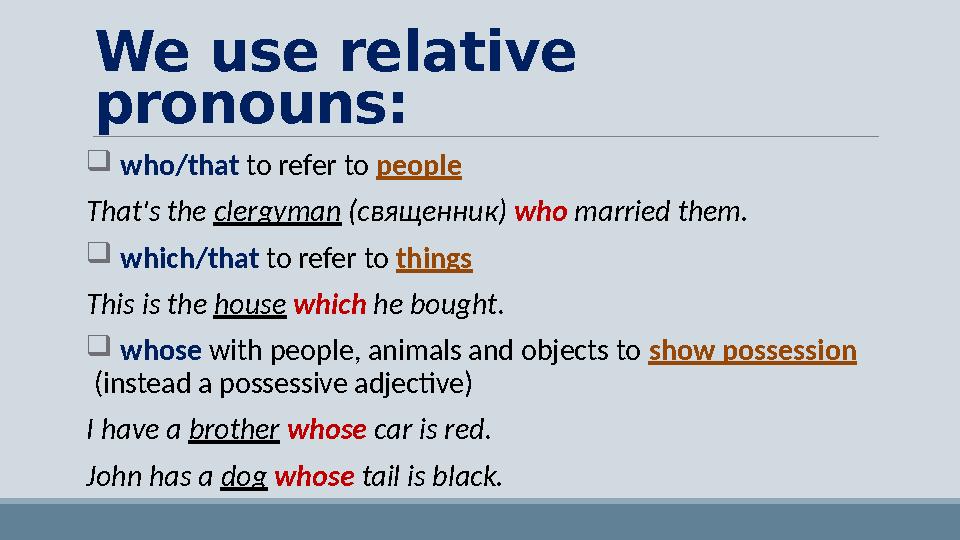
#3 слайд
We use relative
pronouns:
who/that to refer to people
That's the clergyman ( священник ) who married them.
which/that to refer to things
This is the house which he bought .
whose with people, animals and objects to show possession
(instead a possessive adjective)
I have a brother whose car is red .
John has a dog whose tail is black.
3 слайд
We use relative pronouns: who/that to refer to people That's the clergyman ( священник ) who married them. which/that to refer to things This is the house which he bought . whose with people, animals and objects to show possession (instead a possessive adjective) I have a brother whose car is red . John has a dog whose tail is black.
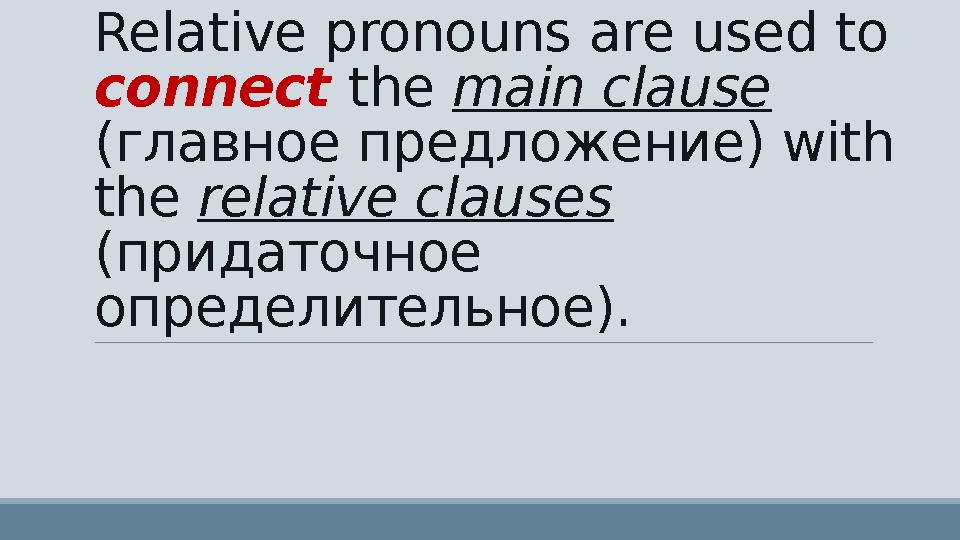
#4 слайд
Relative pronouns are used to
connect the main clause
( главное предложение) with
the relative clauses
( придаточное
определительное).
4 слайд
Relative pronouns are used to connect the main clause ( главное предложение) with the relative clauses ( придаточное определительное).
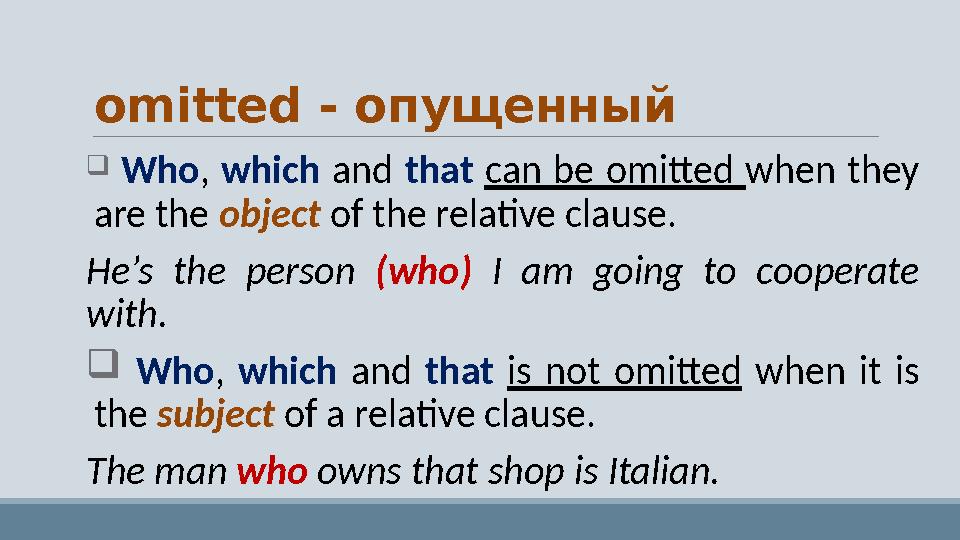
#5 слайд
omitted - опущенный
Who , which and that can be omitted when they
are the object of the relative clause.
He’s the person (who) I am going to cooperate
with.
Who , which and that is not omitted when it is
the subject of a relative clause.
The man who owns that shop is Italian.
5 слайд
omitted - опущенный Who , which and that can be omitted when they are the object of the relative clause. He’s the person (who) I am going to cooperate with. Who , which and that is not omitted when it is the subject of a relative clause. The man who owns that shop is Italian.

#6 слайд
instead of – вместо
preposition - предлог
Whom can be used instead of who when it is the
object of the relative clause. Whom is always used
instead of who or that after a preposition .
That’s the boy to whom Stella was talking on the phone
yesterday.
Whose is never omitted.
That’s the woman whose husband is our new boss.
6 слайд
instead of – вместо preposition - предлог Whom can be used instead of who when it is the object of the relative clause. Whom is always used instead of who or that after a preposition . That’s the boy to whom Stella was talking on the phone yesterday. Whose is never omitted. That’s the woman whose husband is our new boss.
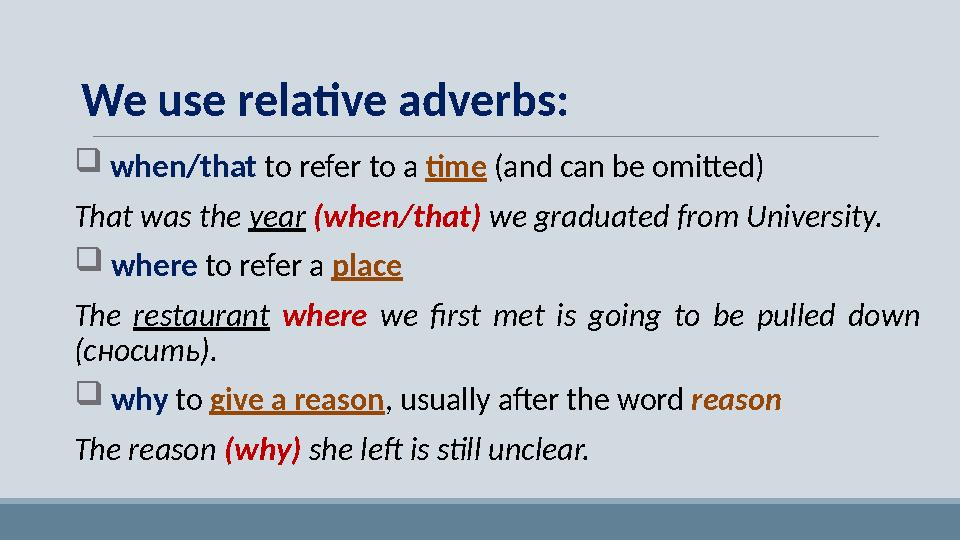
#7 слайд
when/that to refer to a time (and can be omitted)
That was the year (when/that) we graduated from University.
where to refer a place
The restaurant where we first met is going to be pulled down
( сносить) .
why to give a reason , usually after the word reason
The reason (why) she left is still unclear.We use relative adverbs:
7 слайд
when/that to refer to a time (and can be omitted) That was the year (when/that) we graduated from University. where to refer a place The restaurant where we first met is going to be pulled down ( сносить) . why to give a reason , usually after the word reason The reason (why) she left is still unclear.We use relative adverbs:
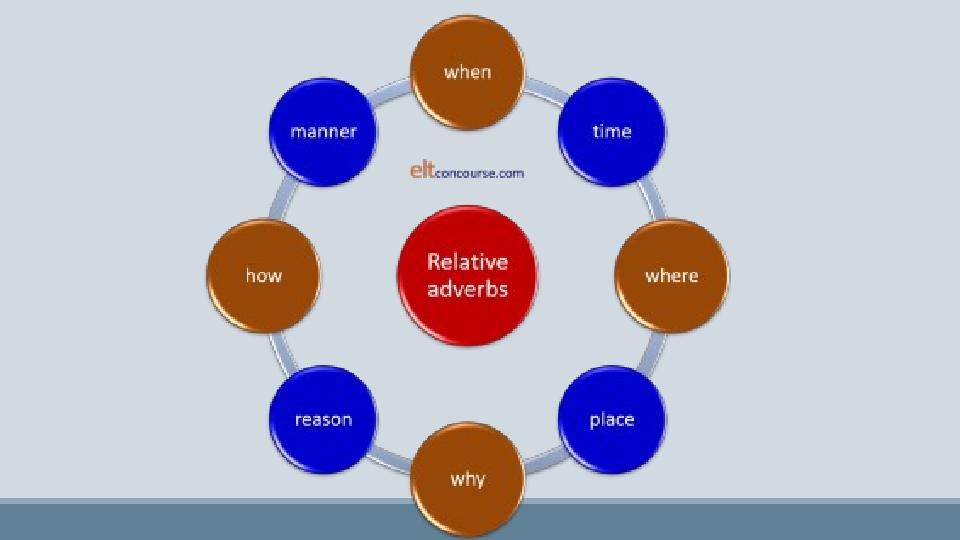
#8 слайд
8 слайд
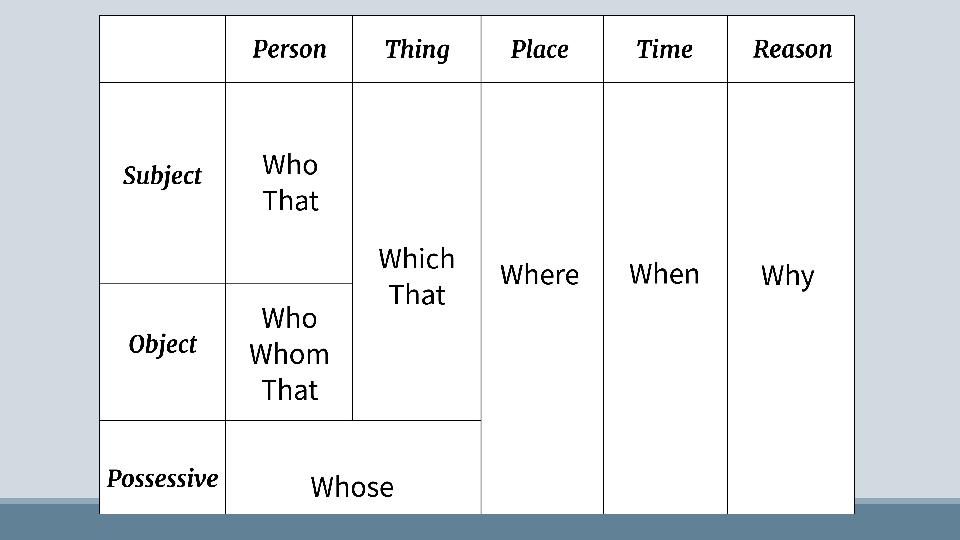
#9 слайд
9 слайд

#10 слайд
10 слайд

шағым қалдыра аласыз
















